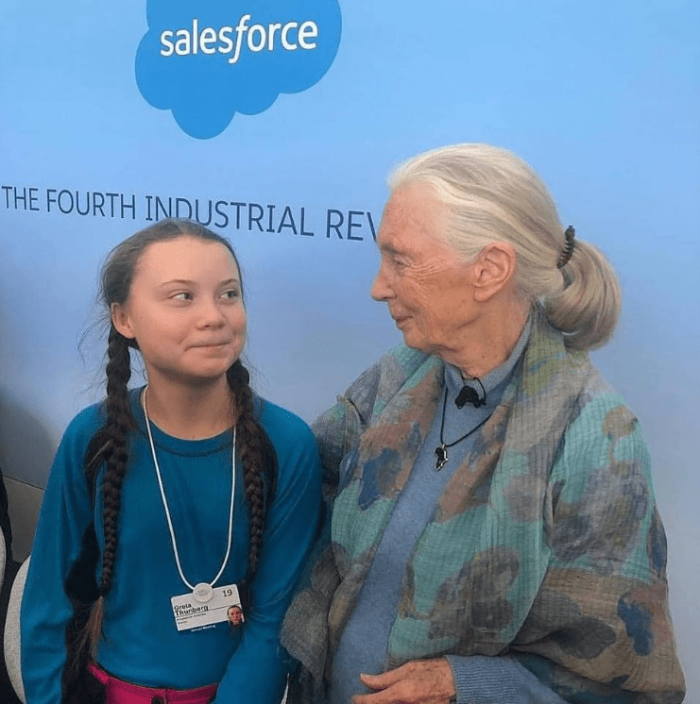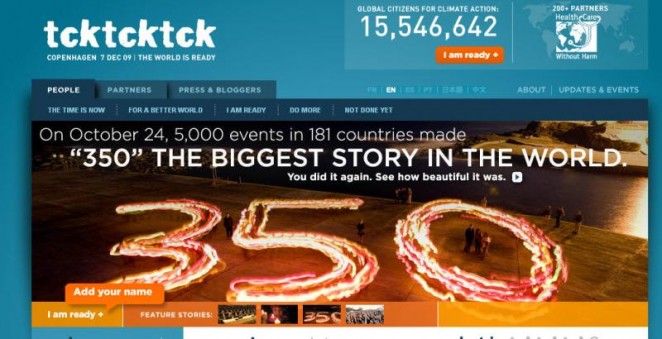Aug 11
20210
Social Engineering, Uncategorized
Amoco Big Green Big Oil Big Solar Biodiversity Capitalism Chevron Circular Economy Clean Currents Coalition Dow DuPont Ellen MacArthur Foundation Ethane Ethylene Exxon Facemasks Global Plastic Action Partnership Marketing microplastics New Plastics Economy Oceans Plastic Pollution Coalition Plastics PPE Procter & Gamble Recycling SystemIQ WWF OneSource Coalition “Plastic Neutral” and “Net Zero” “Plastic Neutral” “Net Zero”
How Big Oil Misled The Public Into Believing Plastic Would Be Recycled
September 11, 2020
By Laura Sullivan

Landfill workers bury all plastic except soda bottles and milk jugs at Rogue Disposal & Recycling in southern Oregon. Laura Sullivan/NPR
Note: An audio version of this story aired on NPR’s Planet Money. Listen to the episode here.
Laura Leebrick, a manager at Rogue Disposal & Recycling in southern Oregon, is standing on the end of its landfill watching an avalanche of plastic trash pour out of a semitrailer: containers, bags, packaging, strawberry containers, yogurt cups.
None of this plastic will be turned into new plastic things. All of it is buried.
“To me that felt like it was a betrayal of the public trust,” she said. “I had been lying to people … unwittingly.”
Rogue, like most recycling companies, had been sending plastic trash to China, but when China shut its doors two years ago, Leebrick scoured the U.S. for buyers. She could find only someone who wanted white milk jugs. She sends the soda bottles to the state.
But when Leebrick tried to tell people the truth about burying all the other plastic, she says people didn’t want to hear it.
“I remember the first meeting where I actually told a city council that it was costing more to recycle than it was to dispose of the same material as garbage,” she says, “and it was like heresy had been spoken in the room: You’re lying. This is gold. We take the time to clean it, take the labels off, separate it and put it here. It’s gold. This is valuable.”
But it’s not valuable, and it never has been. And what’s more, the makers of plastic — the nation’s largest oil and gas companies — have known this all along, even as they spent millions of dollars telling the American public the opposite.
NPR and PBS Frontline spent months digging into internal industry documents and interviewing top former officials. We found that the industry sold the public on an idea it knew wouldn’t work — that the majority of plastic could be, and would be, recycled — all while making billions of dollars selling the world new plastic.
The industry’s awareness that recycling wouldn’t keep plastic out of landfills and the environment dates to the program’s earliest days, we found. “There is serious doubt that [recycling plastic] can ever be made viable on an economic basis,” one industry insider wrote in a 1974 speech.
Yet the industry spent millions telling people to recycle, because, as one former top industry insider told NPR, selling recycling sold plastic, even if it wasn’t true.
“If the public thinks that recycling is working, then they are not going to be as concerned about the environment,” Larry Thomas, former president of the Society of the Plastics Industry, known today as the Plastics Industry Association and one of the industry’s most powerful trade groups in Washington, D.C., told NPR.
In response, industry representative Steve Russell, until recently the vice president of plastics for the trade group the American Chemistry Council, said the industry has never intentionally misled the public about recycling and is committed to ensuring all plastic is recycled.
“The proof is the dramatic amount of investment that is happening right now,” Russell said. “I do understand the skepticism, because it hasn’t happened in the past, but I think the pressure, the public commitments and, most important, the availability of technology is going to give us a different outcome.”
Here’s the basic problem: All used plastic can be turned into new things, but picking it up, sorting it out and melting it down is expensive. Plastic also degrades each time it is reused, meaning it can’t be reused more than once or twice.
On the other hand, new plastic is cheap. It’s made from oil and gas, and it’s almost always less expensive and of better quality to just start fresh.
All of these problems have existed for decades, no matter what new recycling technology or expensive machinery has been developed. In all that time, less than 10 percent of plastic has ever been recycled. But the public has known little about these difficulties.
It could be because that’s not what they were told.
Starting in the 1990s, the public saw an increasing number of commercials and messaging about recycling plastic.
“The bottle may look empty, yet it’s anything but trash,” says one ad from 1990 showing a plastic bottle bouncing out of a garbage truck. “It’s full of potential. … We’ve pioneered the country’s largest, most comprehensive plastic recycling program to help plastic fill valuable uses and roles.”
These commercials carried a distinct message: Plastic is special, and the consumer should recycle it.
Industry companies spent tens of millions of dollars on these ads and ran them for years, promoting the benefits of a product that, for the most part, was buried, was burned or, in some cases, wound up in the ocean.
Documents show industry officials knew this reality about recycling plastic as far back as the 1970s.
Many of the industry’s old documents are housed in libraries, such as the one on the grounds of the first DuPont family home in Delaware. Others are with universities, where former industry leaders sent their records.
At Syracuse University, there are boxes of files from a former industry consultant. And inside one of them is a report written in April 1973 by scientists tasked with forecasting possible issues for top industry executives.
Recycling plastic, it told the executives, was unlikely to happen on a broad scale.
“There is no recovery from obsolete products,” it says.
2020 forward: Facemasks, Personal Protective Equipment – a new genre of pollution and microplastics, global in scale
It says pointedly: Plastic degrades with each turnover.
“A degradation of resin properties and performance occurs during the initial fabrication, through aging, and in any reclamation process,” the report told executives.
Recycling plastic is “costly,” it says, and sorting it, the report concludes, is “infeasible.”
And there are more documents, echoing decades of this knowledge, including one analysis from a top official at the industry’s most powerful trade group. “The costs of separating plastics … are high,” he tells colleagues, before noting that the cost of using oil to make plastic is so low that recycling plastic waste “can’t yet be justified economically.”
Larry Thomas, the former president of the Society of the Plastics Industry, worked side by side with top oil and plastics executives.
He’s retired now, on the coast of Florida where he likes to bike, and feels conflicted about the time he worked with the plastics industry.
“I did what the industry wanted me to do, that’s for sure,” he says. “But my personal views didn’t always jibe with the views I had to take as part of my job.”
Thomas took over back in the late 1980s, and back then, plastic was in a crisis. There was too much plastic trash. The public was getting upset.

Garten Services, a recycling facility in Oregon, where paper and metals still have markets but most plastic is thrown away. All plastic must first go through a recycling facility like this one, but only a fraction of the plastic produced actually winds up getting recycled. Laura Sullivan/NPR
In one document from 1989, Thomas calls executives at Exxon, Chevron, Amoco, Dow, DuPont, Procter & Gamble and others to a private meeting at the Ritz-Carlton in Washington.
“The image of plastics is deteriorating at an alarming rate,” he wrote. “We are approaching a point of no return.”
He told the executives they needed to act.
The “viability of the industry and the profitability of your company” are at stake.
Thomas remembers now.
“The feeling was the plastics industry was under fire — we got to do what it takes to take the heat off, because we want to continue to make plastic products,” he says.
At this time, Thomas had a co-worker named Lew Freeman. He was a vice president of the lobbying group. He remembers many of the meetings like the one in Washington.
“The basic question on the table was, You guys as our trade association in the plastics industry aren’t doing enough — we need to do more,” Freeman says. “I remember this is one of those exchanges that sticks with me 35 years later or however long it’s been … and it was what we need to do is … advertise our way out of it. That was the idea thrown out.”
So began the plastics industry’s $50 million-a-year ad campaign promoting the benefits of plastic.
“Presenting the possibilities of plastic!” one iconic ad blared, showing kids in bike helmets and plastic bags floating in the air.
“This advertising was motivated first and foremost by legislation and other initiatives that were being introduced in state legislatures and sometimes in Congress,” Freeman says, “to ban or curb the use of plastics because of its performance in the waste stream.”
At the same time, the industry launched a number of feel-good projects, telling the public to recycle plastic. It funded sorting machines, recycling centers, nonprofits, even expensive benches outside grocery stores made out of plastic bags.
Few of these projects actually turned much plastic into new things.
NPR tracked down almost a dozen projects the industry publicized starting in 1989. All of them shuttered or failed by the mid-1990s. Mobil’s Massachusetts recycling facility lasted three years, for example. Amoco’s project to recycle plastic in New York schools lasted two. Dow and Huntsman’s highly publicized plan to recycle plastic in national parks made it to seven out of 419 parks before the companies cut funding.
None of them was able to get past the economics: Making new plastic out of oil is cheaper and easier than making it out of plastic trash.
Both Freeman and Thomas, the head of the lobbying group, say the executives all knew that.
“There was a lot of discussion about how difficult it was to recycle,” Thomas remembers. “They knew that the infrastructure wasn’t there to really have recycling amount to a whole lot.”
Even as the ads played and the projects got underway, Thomas and Freeman say industry officials wanted to get recycling plastic into people’s homes and outside on their curbs with blue bins.
Liesemer’s job was to at least try to make recycling work — because there was some hope, he said, however unlikely, that maybe if they could get recycling started, somehow the economics of it all would work itself out.
“I had no staff, but I had money,” Liesemer says. “Millions of dollars.”
Liesemer took those millions out to Minnesota and other places to start local plastic recycling programs.
But then he ran into the same problem all the industry documents found. Recycling plastic wasn’t making economic sense: There were too many different kinds of plastic, hundreds of them, and they can’t be melted down together. They have to be sorted out.
“Yes, it can be done,” Liesemer says, “but who’s going to pay for it? Because it goes into too many applications, it goes into too many structures that just would not be practical to recycle.”
Liesemer says he started as many programs as he could and hoped for the best.
“They were trying to keep their products on the shelves,” Liesemer says. “That’s what they were focused on. They weren’t thinking what lesson should we learn for the next 20 years. No. Solve today’s problem.”
And Thomas, who led the trade group, says all of these efforts started to have an effect: The message that plastic could be recycled was sinking in.
“I can only say that after a while, the atmosphere seemed to change,” he says. “I don’t know whether it was because people thought recycling had solved the problem or whether they were so in love with plastic products that they were willing to overlook the environmental concerns that were mounting up.”
But as the industry pushed those public strategies to get past the crisis, officials were also quietly launching a broader plan.
In the early 1990s, at a small recycling facility near San Diego, a man named Coy Smith was one of the first to see the industry’s new initiative.
Back then, Smith ran a recycling business. His customers were watching the ads and wanted to recycle plastic. So Smith allowed people to put two plastic items in their bins: soda bottles and milk jugs. He lost money on them, he says, but the aluminum, paper and steel from his regular business helped offset the costs.
But then, one day, almost overnight, his customers started putting all kinds of plastic in their bins.
“The symbols start showing up on the containers,” he explains.
Smith went out to the piles of plastic and started flipping over the containers. All of them were now stamped with the triangle of arrows — known as the international recycling symbol — with a number in the middle. He knew right away what was happening.
“All of a sudden, the consumer is looking at what’s on their soda bottle and they’re looking at what’s on their yogurt tub, and they say, ‘Oh well, they both have a symbol. Oh well, I guess they both go in,’ ” he says.

Unwanted used plastic sits outside Garten Services, a recycling facility in Oregon. Laura Sullivan/NPR
The bins were now full of trash he couldn’t sell. He called colleagues at recycling facilities all across the country. They reported having the same problem.
Industry documents from this time show that just a couple of years earlier, starting in 1989, oil and plastics executives began a quiet campaign to lobby almost 40 states to mandate that the symbol appear on all plastic — even if there was no way to economically recycle it. Some environmentalists also supported the symbol, thinking it would help separate plastic.
Smith said what it did was make all plastic look recyclable.
“The consumers were confused,” Smith says. “It totally undermined our credibility, undermined what we knew was the truth in our community, not the truth from a lobbying group out of D.C.”
But the lobbying group in D.C. knew the truth in Smith’s community too. A report given to top officials at the Society of the Plastics Industry in 1993 told them about the problems.
“The code is being misused,” it says bluntly. “Companies are using it as a ‘green’ marketing tool.”
The code is creating “unrealistic expectations” about how much plastic can actually be recycled, it told them.
Smith and his colleagues launched a national protest, started a working group and fought the industry for years to get the symbol removed or changed. They lost.
“We don’t have manpower to compete with this,” Smith says. “We just don’t. Even though we were all dedicated, it still was like, can we keep fighting a battle like this on and on and on from this massive industry that clearly has no end in sight of what they’re able to do and willing to do to keep their image the image they want.”
“It’s pure manipulation of the consumer,” he says.
In response, industry officials told NPR that the code was only ever meant to help recycling facilities sort plastic and was not intended to create any confusion.
Without question, plastic has been critical to the country’s success. It’s cheap and durable, and it’s a chemical marvel.
It’s also hugely profitable. The oil industry makes more than $400 billion a year making plastic, and as demand for oil for cars and trucks declines, the industry is telling shareholders that future profits will increasingly come from plastic.
And if there was a sign of this future, it’s a brand-new chemical plant that rises from the flat skyline outside Sweeny, Texas. It’s so new that it’s still shiny, and inside the facility, the concrete is free from stains.

Chevron Phillips Chemical’s new $6 billion plastic manufacturing plant rises from the skyline in Sweeny, Texas. Company officials say they see a bright future for their products as demand for plastic continues to rise. Laura Sullivan/NPR
This plant is Chevron Phillips Chemical’s $6 billion investment in new plastic.
“We see a very bright future for our products,” says Jim Becker, the vice president of sustainability for Chevron Phillips, inside a pristine new warehouse next to the plant.
“These are products the world needs and continues to need,” he says. “We’re very optimistic about future growth.”
With that growth, though, comes ever more plastic trash. But Becker says Chevron Phillips has a plan: It will recycle 100% of the plastic it makes by 2040.
Becker seems earnest. He tells a story about vacationing with his wife and being devastated by the plastic trash they saw. When asked how Chevron Phillips will recycle 100% of the plastic it makes, he doesn’t hesitate.
“Recycling has to get more efficient, more economic,” he says. “We’ve got to do a better job, collecting the waste, sorting it. That’s going to be a huge effort.”
Fix recycling is the industry’s message too, says Steve Russell, the industry’s recent spokesman.
“Fixing recycling is an imperative, and we’ve got to get it right,” he says. “I understand there is doubt and cynicism. That’s going to exist. But check back in. We’re there.”
Larry Thomas, Lew Freeman and Ron Liesemer, former industry executives, helped oil companies out of the first plastic crisis by getting people to believe something the industry knew then wasn’t true: That most plastic could be and would be recycled.
Russell says this time will be different.
“It didn’t get recycled because the system wasn’t up to par,” he says. “We hadn’t invested in the ability to sort it and there hadn’t been market signals that companies were willing to buy it, and both of those things exist today.”
But plastic today is harder to sort than ever: There are more kinds of plastic, it’s cheaper to make plastic out of oil than plastic trash and there is exponentially more of it than 30 years ago.
And during those 30 years, oil and plastic companies made billions of dollars in profit as the public consumed ever more quantities of plastic.
Russell doesn’t dispute that.
“And during that time, our members have invested in developing the technologies that have brought us where we are today,” he says. “We are going to be able to make all of our new plastic out of existing municipal solid waste in plastic.”
Recently, an industry advocacy group funded by the nation’s largest oil and plastic companies launched its most expensive effort yet to promote recycling and cleanup of plastic waste. There’s even a new ad.

New plastic bottles come off the line at a plastic manufacturing facility in Maryland. Plastic production is expected to triple by 2050. Laura Sullivan/NPR
“We have the people that can change the world,” it says to soaring music as people pick up plastic trash and as bottles get sorted in a recycling center.
Freeman, the former industry official, recently watched the ad.
“Déjà vu all over again,” he says as the ad finishes. “This is the same kind of thinking that ran in the ’90s. I don’t think this kind of advertising is, is helpful at all.”
Larry Thomas said the same.
“I don’t think anything has changed,” Thomas says. “Sounds exactly the same.”
These days as Thomas bikes down by the beach, he says he spends a lot of time thinking about the oceans and what will happen to them in 20 or 50 years, long after he is gone.
And as he thinks back to those years he spent in conference rooms with top executives from oil and plastic companies, what occurs to him now is something he says maybe should have been obvious all along.
He says what he saw was an industry that didn’t want recycling to work. Because if the job is to sell as much oil as you possibly can, any amount of recycled plastic is competition.
“You know, they were not interested in putting any real money or effort into recycling because they wanted to sell virgin material,” Thomas says. “Nobody that is producing a virgin product wants something to come along that is going to replace it. Produce more virgin material — that’s their business.”
And they are. Analysts now expect plastic production to triple by 2050.
[Cat Schuknecht contributed to this report.]
Further reading:
Face Masks: A Danger to Our Planet, Our Children & Ourselves





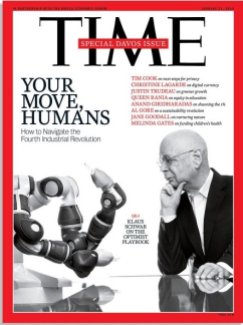 He enthuses: “While it may not feel momentous to those of us experiencing a series of small but significant adjustments to life on a daily basis, it is not a minor change—the Fourth Industrial Revolution is a new chapter in human development, on a par with the first, second and third Industrial Revolutions, and once again driven by the increasing availability and interaction of a set of extraordinary technologies”. (5)
He enthuses: “While it may not feel momentous to those of us experiencing a series of small but significant adjustments to life on a daily basis, it is not a minor change—the Fourth Industrial Revolution is a new chapter in human development, on a par with the first, second and third Industrial Revolutions, and once again driven by the increasing availability and interaction of a set of extraordinary technologies”. (5)

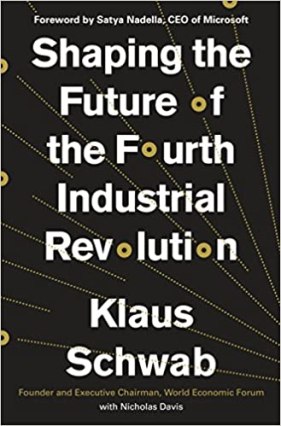 But this does not stop him presenting them in a positive light, as when he declares that “public crime is likely to decrease due to the convergence of sensors, cameras, AI and facial recognition software”. (27)
But this does not stop him presenting them in a positive light, as when he declares that “public crime is likely to decrease due to the convergence of sensors, cameras, AI and facial recognition software”. (27)


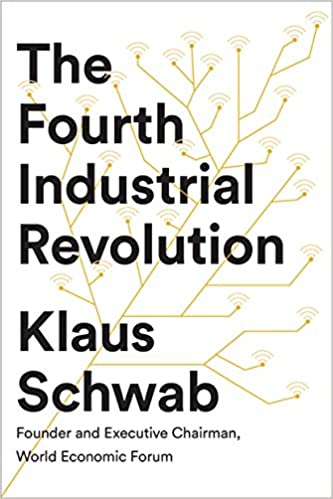 “This gives rise to an inequality that goes beyond the societal one described earlier. This ontological inequality will separate those who adapt from those who resist—the material winners and losers in all senses of the words. The winners may even benefit from some form of radical human improvement generated by certain segments of the fourth industrial revolution (such as genetic engineering) from which the losers will be deprived. This risks creating class conflicts and other clashes unlike anything we have seen before”. (51)
“This gives rise to an inequality that goes beyond the societal one described earlier. This ontological inequality will separate those who adapt from those who resist—the material winners and losers in all senses of the words. The winners may even benefit from some form of radical human improvement generated by certain segments of the fourth industrial revolution (such as genetic engineering) from which the losers will be deprived. This risks creating class conflicts and other clashes unlike anything we have seen before”. (51)
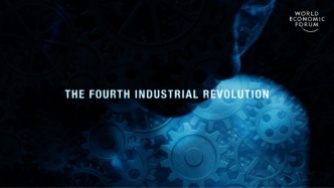 One of these “narratives” whitewashes the reasons for which 4IR technology needs to be installed everywhere in the world as soon as possible.
One of these “narratives” whitewashes the reasons for which 4IR technology needs to be installed everywhere in the world as soon as possible.